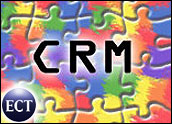
They are everywhere — value propositions that claim much and deliver little. The fact that so many value propositions these days are of the “boil the ocean” variety makes some thoughtful people wonder if their view of the world is overly simplistic or if they are missing something. Sure, a listing of all the features of a new software application presented as differentiators is educational. Yet it is often irrelevant to how companies actually buy software.
Many value propositions are starting to look like the menus at Chinese restaurants. To quote the late, great Rodney Dangerfield in that sophomoric classic “Back to School”: “Do you look at a menu and say, OK?” It’s the same perception one experiences when looking at the many factors so many software companies list as differentiators. Listing features and creating the “Chinese Menu Value Proposition” may impress others in the industry but is often seen as irrelevant by potential customers.
The recent article, “Customer Value Propositions in Business Markets,” published in the March 2006 “Harvard Business Review” by James C. Anderson, James A. Narus and Wouter van Rossum, has some great insights into how to rework value propositions. Throughout this column, I will share some of the highlights from that article as they relate to CRM software.
Three Types of Value Propositions
There are three kinds of value propositions, the authors observe. The first, “all benefits,” is what is also known as the Chinese menu approach to delivering value, which is to overwhelm prospects with the list of features an application has.
What’s lacking is the benefit assertion, or how the many features of a software application actually translate into benefits. With so many of the companies that are buying software today looking for guidance through the painful task of redefining processes, vendors who list features look out of touch.
The “all benefits” approach also inadvertently stresses the fact that applications are more comparable than not with competitors. The net result is that the “all benefits” approach is a boil-the-ocean value proposition that invites more comparison and competition rather than distancing it.
The second value proposition, “favorable points of difference,” focuses on defining a competitive position relative to alternatives. This is tricky to do well; in many software sales cycles, the strongest competitors are homegrown, are legacy systems, and have the option of doing nothing. These homegrown legacy systems and processes are substitutes that prospects hold onto because they’re known — even if the systems and processes to use them are known to be inefficient and costly.
Building value propositions to compete with substitute systems and processes takes strong insight into the value of just exactly what the targeted systems and processes are delivering. Many times, software companies stress personalized service and, when pressed, sales reps say that they themselves and their commitment to the prospect constitute the value proposition. This rarely works.
Instead, it’s important to first get a very clear idea of what the favorable points of reference are that keep the inefficient and costly processes in place, the authors suggest. Resorting to price or promises of heightened customer service are often irrelevant to buyers who have functioning substitute systems and processes already in place.
The third type of value proposition the authors mention — and the most successful in influencing prospects, according to their research — is “resonating focus.” The basis of this type of value proposition is to stress only one or two points of difference between competitive and substitute solutions or products. The one or two points of difference are selected because they represent the highest payoff for prospects.
SaaS Value Proposition Needs Work
An example of a successful “resonating focus” value proposition in CRM is the selling of the SaaS platform overall, and CRM specifically. SaaS CRM vendors are achieving success largely by targeting companies in which sales is politically the strongest department.
To the sales VP, speed of implementation and ease of use are critical. These are the two most critical points of reference, forming the basis of a successful “resonating focus” value proposition. For the CIO of the same company, data security and reliability are the two most critical points, followed by pricing.
Bottom Line: What truly differentiates one vendor from the next is not the length of its features list — it is the insight needed to effectively sell against substitute systems and processes with proven points of difference in the value they deliver.
Louis Columbus, a CRM Buyer columnist, is a former senior analyst with AMR Research. He is the author of several books on making the most of analyst relationships, including Best Practices in Analyst Relations, which can be downloaded for free.















































